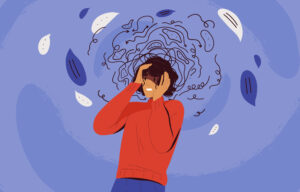Every living creature on this planet survives by processing sensory input from all of the body’s different sensors and automatically causes you to behave in a manner that keeps you safe. Secondarily, they are motivated to seek reward to allow the body to regenerate and propagate the species. Humans at this basic level are no different than any other species of living organisms. Most of the time, you exist in a neutral zone. You will usually sense discomfort to guide you before feeling more intense avoidance cues. It is the same for feeling comfortable enough to seek pleasure.
Our nervous system receives data from the environment through each body sensor and analyzes it every millisecond. All of the senses are in constant competition. There is nothing inherent in your eyes, ears, skin, stomach, etc. that indicate safety versus threat. It’s only by the nervous system interpreting data that we understand, catalogue, and navigate the world around us. It is your brain that allows you to “feel.”

Not only does your brain interpret signals and interpret sensations, it is in charge of mobilizing your body’s defenses or directing you to relax. A major function of the central nervous system is to maintain the incredibly delicate balance of the body’s chemistry. There is direct stimulation of various organs through hormones and much of the communication is also through small signaling proteins between cells called, “cytokines.”
How does your body react to threat?
Every threat, regardless how small, is met with a defensive response. It is how we evolved and also survive. There is ongoing delicate interaction with the environment. We won’t feel effects until a certain threshold is reached. The reaction proceeds in a graded manner of fight, flight, freeze, and faint. All of us are familiar with the fight and flight phase. It is under serious life-threating situations that we go into freeze or faint.
Under threat, hormones are secreted that increase your chances of survival. Some of the core ones are adrenaline, noradrenaline, endorphins, histamines, and cortisol. The net result of these hormones is an increased capacity to flee from danger. This is modulated through the autonomic nervous system, which results in an increased heart rate, rapid breathing, increased fuel supply, dilation of certain blood vessels to your muscles, and constriction of blood flow to your brain, bowel, and bladder. Every aspect of it is intended to maximize your chances of survival.
One aspect of the survival response is stimulation of the immune response, which is largely mediated by the above mentioned cytokines. They are in the category of inflammatory cytokines in contrast to anti-inflammatory ones in the presence of cues of safety. This immune/ inflammatory reaction affects every cell in your body and is necessary in the short term. However, when it is sustained, the results are devastating. Essentially, all chronic mental and physical disease from long-term exposure to inflammation and elevated metabolic activity. Your body is being attacked by your own cells.
Compelled – humans call it anxiety
The sum total of all of these elevated stress hormones/ inflammatory markers is a strong unpleasant feeling that compels us to take action to resolve the threat. All animals experience this heightened state, but humans have language and consciousness. We can label it. This feeling of dread is what we call anxiety. It is so deep and uncomfortable that there is no choice but to take action. Once the threat is gone/resolved and the body is back in balance (homeostasis), you can go on with your life.
Anxiety describes the cumulative sensation caused by threat. It is not the cause of a threat. It is a symptom, not a diagnosis, disease, or disorder. Therefore, it isn’t treatable by addressing it as the primary psychological problem.
“The Curse of Consciousness”
The universal problem of being human is what I call, “The Curse of Consciousness.” Recent neuroscience research has shown that threats in the form of unpleasant thoughts or concepts are processed in a similar area of the brain with the same neurochemical response as physical threats. (1)
The “curse” is that none of us can escape our thoughts, so we are subjected to an endless neuro/chemical/ inflammatory assault on our bodies.

This translates into more than 30 physical and mental symptoms. Not only do people living under chronic stress develop serious diseases, they do not live as long. (4) Since these unconscious survival mechanisms have been estimated to be hundreds of thousands of times more powerful than your conscious brain, rational interventions to manage or control them are impossible. However, without the unpleasant sensation of anxiety compelling you to take action, you wouldn’t survive.
So, what is pain? It is a warning signal of danger. There are various receptors throughout the body yielding many different uncomfortable sensations. But regardless of the mental or physical source of threatening input, your body goes on alert and the end result is anxiety.
Anxiety is the pain and is also necessary for life. Once you understand its nature and role, you will be able to assimilate it into your life in a manner that allows you to thrive.
References:
- Eisenberger N. “The neural bases of social pain: Evidence for shared representations with physical pain.” Psychosom Med (2012); 74: 126-135.
- Song, H, et al. Association of stress-related disorders with subsequent autoimmune disease. JAMA (2018); 319: 2388-2400.
- Torrance N, et al. Severe chronic pain is associated with increased 10-year mortality: a cohort record linkage study. Eur J Pain (2010);14:380-386.
- Rahe R, et al. “Social stress and illness onset.” J Psychosomatic Research (1964); 8: 35.
